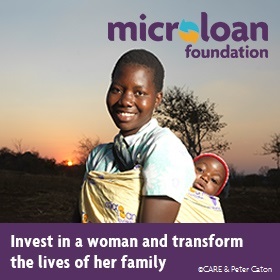How eco-friendly features impact real estate value
Sustainability has evolved from a buzzword to a movement. With increasing awareness of climate change and the importance of reducing our carbon footprint, eco-friendly homes are becoming highly desirable.
Buyers are not just looking for a place to live; they want homes that are energy efficient, environmentally responsible, and sustainable. This shift in consumer preferences drives the demand for green real estate and encourages more developers to integrate sustainable practices into their projects.
Benefits of eco-friendly features
Eco-friendly features offer numerous benefits that can attract buyers and increase your property’s value. Reduced utility bills through energy-saving appliances, insulation, and solar panels are significant advantages.
Improved indoor air quality with non-toxic building materials and better ventilation contribute to a healthier living environment. Homes built with sustainable practices and materials have a lower environmental impact.
Additionally, these homes are often more durable and require less maintenance, enhancing their long-term value. Furthermore, homes equipped with eco-friendly features tend to have better energy performance ratings, which can be a major selling point.
The real estate market is continually evolving, with a significant trend being the incorporation of eco-friendly features in properties. Issues in Teton Valley real estate include fluctuating property values, limited housing inventory, and increasing demand from out-of-state buyers.
Despite these challenges, investing in energy-efficient homes is advantageous. They offer long-term savings on energy bills and reduced maintenance costs, making them a wise choice for buyers in Teton Valley real estate.
Key eco-friendly features that boost value
Incorporating eco-friendly features can make your property stand out in the market. Modern energy-efficient appliances can significantly reduce energy consumption.
Appliances with the ENERGY STAR label indicate superior energy performance, making them an excellent addition to any eco-friendly home. These appliances use less electricity and water, leading to substantial savings on utility bills.
Solar Panels
Solar panels are one of the most effective ways to generate renewable energy. They can dramatically cut electricity costs and may even allow you to sell excess power back to the grid.
Installing solar panels can also increase the appeal of your home to environmentally conscious buyers. Proper insulation and high-quality windows help maintain indoor temperature, reducing the need for heating and cooling. This not only saves money but also makes the home more comfortable.
Water-Saving Fixtures
Water-saving fixtures such as low-flow faucets, showerheads, and toilets conserve water without sacrificing performance. These fixtures are both eco-friendly and cost-effective. Using recycled or sustainably sourced materials for construction and finishes reduces environmental impact and appeals to eco-conscious buyers.
Green roofs, or living roofs, provide insulation, reduce rainwater runoff, and create green space, making them an excellent feature for urban areas.
Smart Home Technologies
Smart home technologies contribute to eco-friendliness by optimizing energy use. Systems that control lighting, heating, and cooling based on occupancy and time of day can significantly reduce energy consumption.
The use of natural landscaping, such as xeriscaping, also minimizes water use and maintenance requirements, further enhancing the eco-friendliness of a property.
| Feature | Traditional Homes | Eco-Friendly Homes |
| Energy Consumption | High | Low |
| Utility Bills | High | Low |
| Indoor Air Quality | Standard | Improved (Non-toxic materials) |
| Environmental Impact | Significant | Minimal |
| Maintenance Costs | Higher | Lower (Durable materials) |
| Resale Value | Standard | Higher (Increased demand) |
| Water Usage | Higher | Lower (Water-saving fixtures) |
How eco-friendly features influence marketability
Eco-conscious buyers are willing to pay a premium for homes that match their values. Properties with eco-friendly features often sell faster and at higher prices compared to those without. The reduced utility and maintenance costs associated with eco-friendly homes are attractive to buyers.
Lower ongoing expenses mean better affordability in the long run. Many buyers are motivated by the desire to reduce their environmental footprint.
Homes that contribute to sustainability are more appealing to this growing market segment. Homes with eco-friendly features provide improved indoor environments, contributing to better health and comfort. This can be a significant selling point for families and individuals alike.
Moreover, eco-friendly homes often come with certifications like LEED (Leadership in Energy and Environmental Design) or ENERGY STAR, which serve as a mark of quality and sustainability. These certifications can make your property more attractive to prospective buyers, as they provide assurance of the home’s energy efficiency and environmental responsibility.
Real estate agents and marketers can leverage the eco-friendly aspects of a property to attract a broader audience. Highlighting the long-term savings, health benefits, and positive environmental impact makes a compelling case for prospective buyers.
Green landscaping and its impact
Landscaping plays a crucial role in enhancing your home’s curb appeal and overall value. Green landscaping, in particular, can make a significant impact. Xeriscaping, which involves using drought-resistant plants and minimizing lawn areas, reduces water use and maintenance costs.
Planting native species in your garden can contribute to biodiversity and support local wildlife. Native plants are adapted to the local climate and soil conditions, which means they require less water and maintenance compared to exotic species. Incorporating rain gardens or permeable pavements can help manage stormwater runoff, reducing the risk of flooding and soil erosion.
Adding trees to your property can provide shade, reduce the urban heat island effect, and improve air quality. Trees can also create a more pleasant outdoor environment, making your home more inviting. Trees can also act as windbreaks, reducing heating costs in the winter and cooling costs in the summer.
Invest in green for a brighter future
Incorporating eco-friendly features into your home is not just a trend; it’s a smart investment. By enhancing energy efficiency, sustainability, and comfort, you can increase your property’s value and appeal to a growing market of eco-conscious buyers. The benefits of green homes extend beyond financial gains. They contribute to a healthier planet and a healthier lifestyle for you and your family.
Ready to make your home more eco-friendly? Start by assessing your current energy use and identifying areas for improvement. Consult with a professional to explore the best green upgrades for your property. Invest in the future—make your home eco-friendly today!
By focusing on eco-friendly features, you not only contribute to a healthier planet but also enjoy the financial and personal benefits of a sustainable home. Take the first step towards a greener future and see the positive impact on your real estate value. Your investment in eco-friendly features is an investment in a better world for future generations.
FAQs
Do eco-friendly features significantly increase property value?
Yes, homes with eco-friendly features often have higher resale values due to their lower operating costs and appeal to environmentally conscious buyers.
Are there government incentives for installing eco-friendly features?
Yes, there are various federal and state incentives, including tax credits and rebates, for installing energy-efficient and renewable energy systems.
Can I add eco-friendly features to an existing home?
Absolutely. Many eco-friendly upgrades, such as adding insulation, installing solar panels, or replacing appliances, can be made to existing homes.
How do I start making my home eco-friendly?
Begin by assessing your current energy use and identifying areas for improvement. Simple changes like upgrading to energy-efficient appliances or installing water-saving fixtures can make a big difference.




